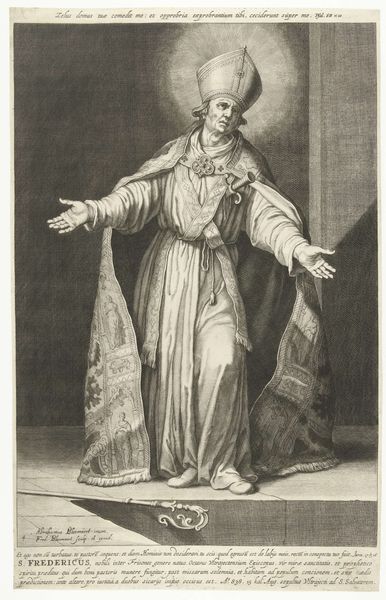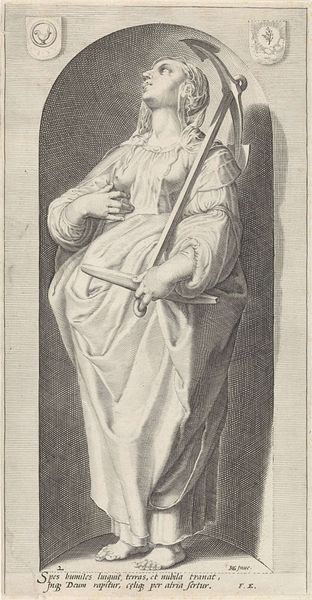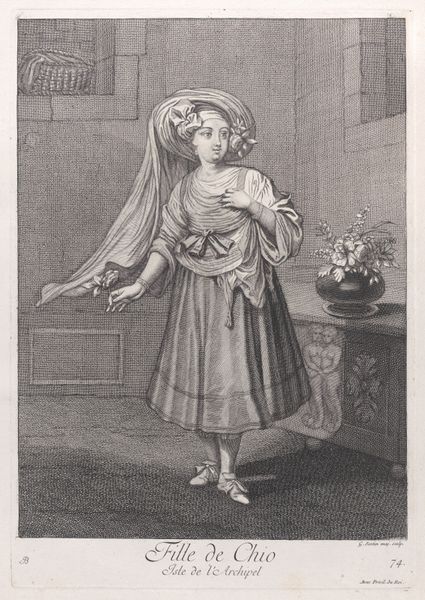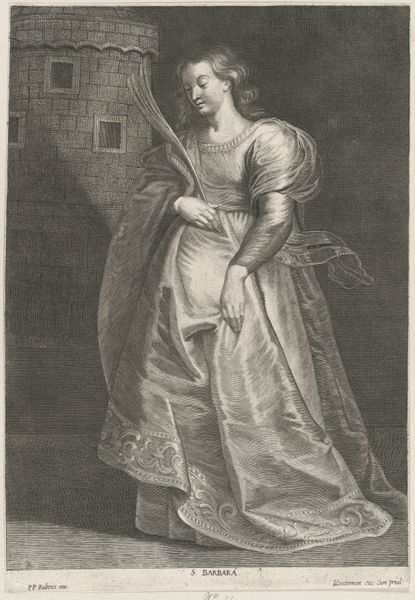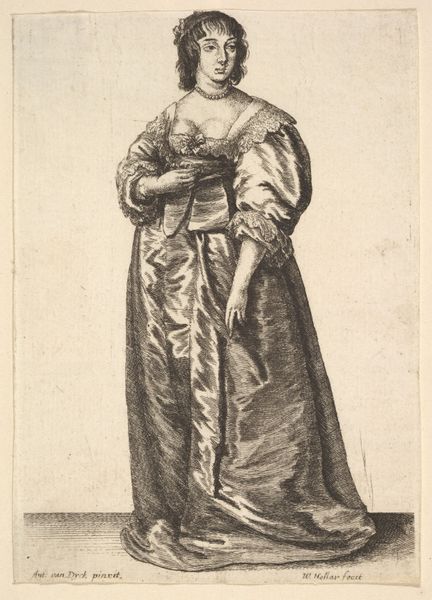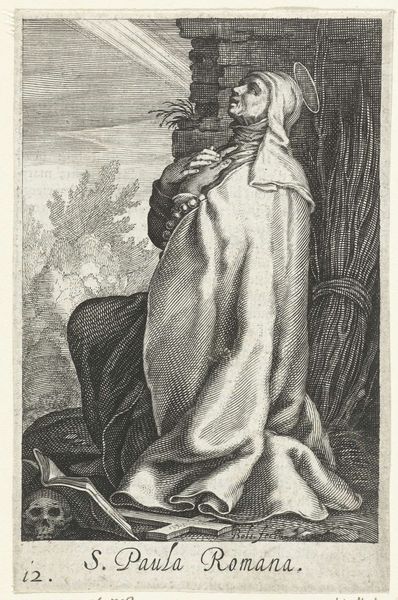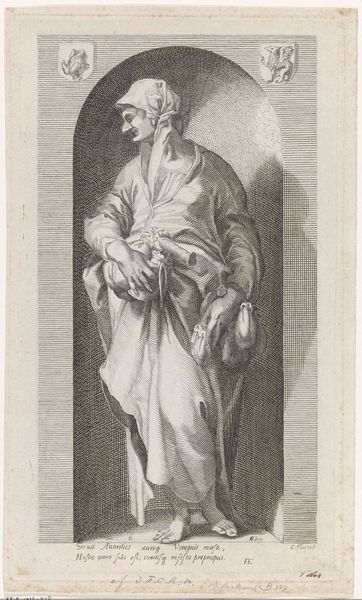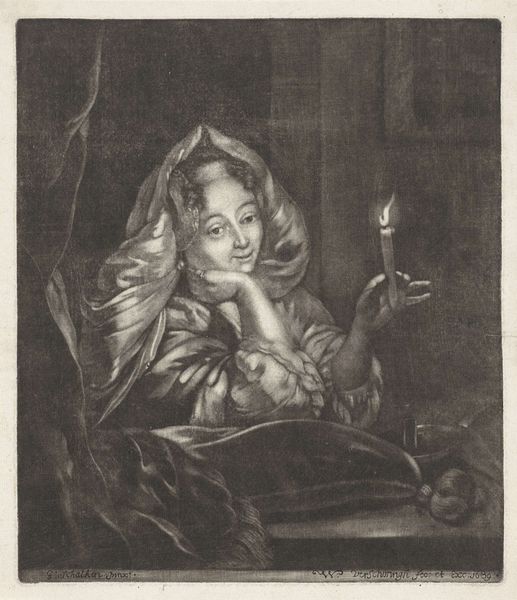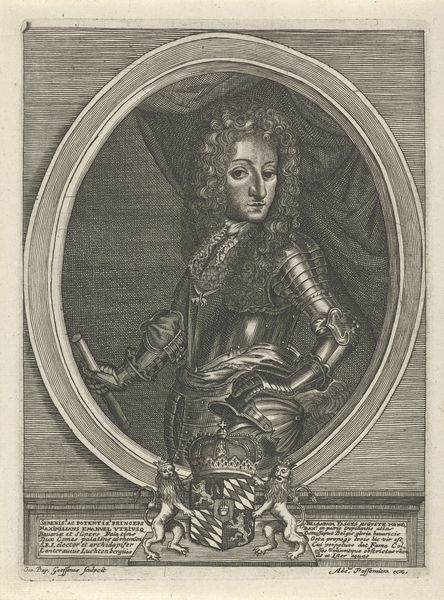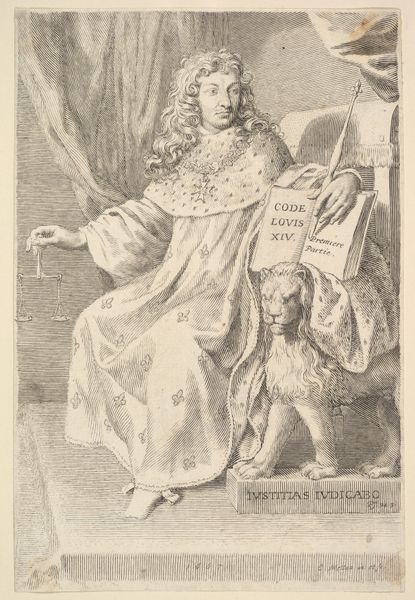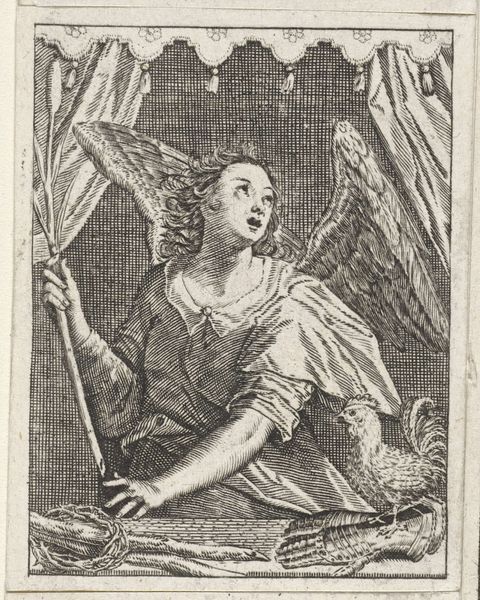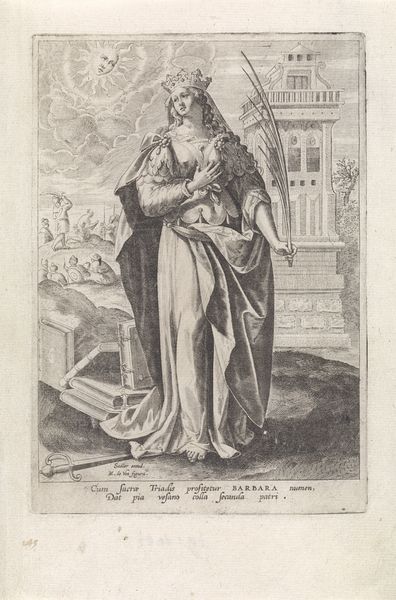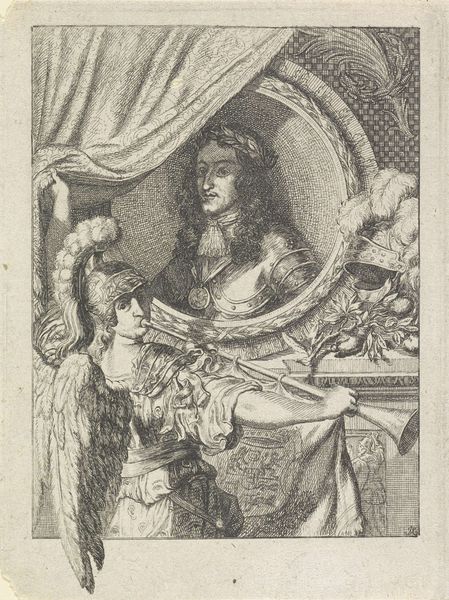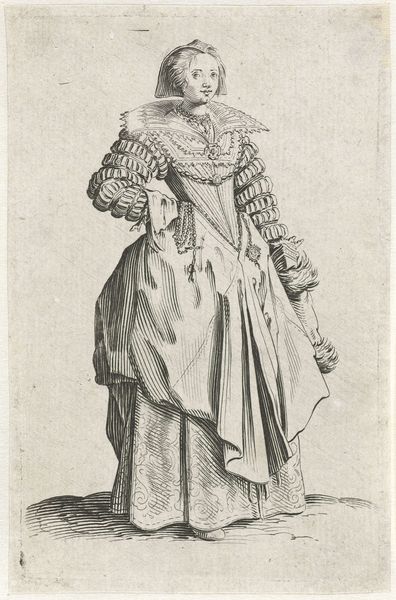
engraving
#
portrait
#
baroque
#
genre-painting
#
history-painting
#
engraving
Dimensions: height 387 mm, width 273 mm
Copyright: Rijks Museum: Open Domain
Curator: Here we have "Nacht," or "Night," an engraving from around 1655-1677 by Jeremias Falck. The central figure, a young woman, is pulling back a curtain to reveal… what exactly? Darkness? The edge of the print obscures it. Editor: The texture of the engraving is really captivating. The controlled lines giving way to the softness of her skin, the fabric… I immediately think about the skill involved, the repetition, and how such detailed work elevates a common material to something of value. Curator: Right, the materiality of it is interesting, especially when considered alongside the subject. Falck was a printmaker, engraver and cartographer, so prints were a means of mass producing images and knowledge. Here we see a genre painting made through the reproductive art of engraving. Editor: Absolutely. Engraving implies labor. It makes me wonder about the printmaking process in Falck’s studio. What was the division of labor, how long did it take to create each print, and who was consuming these images? These were valuable objects circulating through the social networks of the time. Curator: Well, engravings were relatively affordable compared to paintings, meaning they could reach a broader audience. Looking at the social and cultural aspects, notice how the composition frames the subject as both delicate and mysterious. She's holding a candle, illuminating the darkness, and there is text below written in French and another language – English? Editor: That duality – light and shadow, accessibility and artistry – reflects the fascinating tension inherent in reproductive printmaking. It's a constant negotiation between art and commerce. These images became important means through which ideas, culture, and aesthetic trends became more widely available to different layers of society. Curator: This work is indeed complex when seen from a historical point of view; Falck contributed significantly to circulating images and influencing societal tastes. Seeing this engraving helps to recognize the intricate relationship between artistry, societal norms, and technological advancements. Editor: And for me, seeing the tangible result of laborious effort reminds us of all that went into the art historical record we engage with. It asks us to see art, culture and the passage of time through this print.
Comments
No comments
Be the first to comment and join the conversation on the ultimate creative platform.
